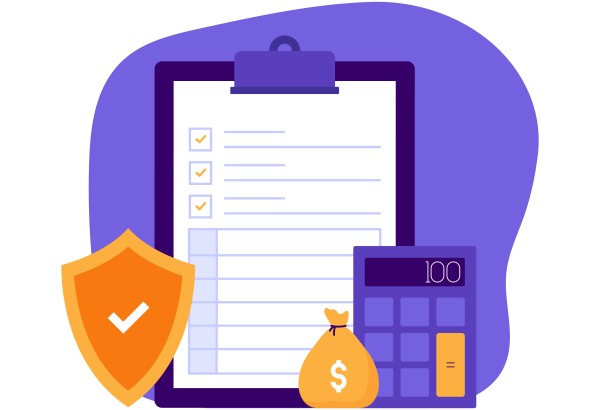Leaders at Lehigh Valley Health Network (LVHN) long struggled with using data and benchmarking to monitor and improve performance. They had data to share with managers, but a general lack of trust in the numbers rendered them ineffective in driving real change.
With implementation of Axiom™ Comparative Analytics and Axiom™ Productivity Reporting two years ago, attitudes have completely shifted.
“Before, I had entire hospital units of 600 people that said, ‘We're not going to use those numbers,’” said Kyle Davison, Management Engineering Manager for LVHN. “Now, our benchmarks are making a lot more sense to management. There is trust in the data and that’s a big win for us.”
LVHN includes nine hospital campuses and numerous health centers, physician practices, rehabilitation locations, ExpressCARE sites, and other outpatient locations in seven eastern Pennsylvania counties. The Management Engineering team leads healthcare productivity management, labor budget, and healthcare benchmarking. Reliable data is critical to managing those processes and other performance metrics for the growing health system.
Building Trust in the Data
Before Comparative Analytics, poor data integrity hindered performance improvement across LVHN. Manual data draws and normalization from multiple sources led to guesswork, human error, and delays in making apples-to-apples comparisons. Managers considered the information in quarterly performance reports too stale to use.
Inconsistent reporting among departments made benchmarking a challenge, with few common data points to compare to external benchmarks. For example, some departments recorded nurse sitter hours while others did not, making it difficult to define accurate, systemwide measures. Now making such comparisons is a simple mapping exercise.
The team uses Comparative Analytics to draw more timely, integrated numbers systemwide. It pulls data directly from LVHN’s other systems, such as revenue cycle, payroll, electronic medical records, and Axiom™ Budgeting and Axiom™ Financial Planning.
“Healthcare operations sometimes move so quickly that timeliness is a big issue,” Kyle said. “Now, the managers see the data and say ‘Hey, I can fix this by next month.’ It is a huge, huge win.”
More Efficient Reporting
Axiom’s automated reports and dashboards are easily adjusted to suit managers’ needs and provide transparency into where the numbers come from, so managers trust the findings.
“A high level of trust in the data is the No. 1 benefit of Comparative Analytics — people actually want to use it to guide improvements,” Kyle said. “The ability to build dashboards and data that make sense all in one place is super helpful when dealing with different groups.”
Comparative Analytics’ integrations and automations also help the management engineering team deliver insights efficiently: narrowing routine, biweekly performance reports from six to two, and reducing report preparation from several days to just an hour.
The team embeds hyperlinks in reports so managers can drill into the data as needed. With clear visibility, managers view how results are calculated and raise any mapping concerns. It reinforces their trust in the data because the system is highly intuitive and easy to use.
“It's a quick click and we can give a full analysis of their volumes, what their budget was, and how they performed,” Kyle said. “It's a one-stop-shop where managers can do everything they need to do.”
Tackling Today’s Labor Challenges
LVHN uses Axiom to monitor and manage labor performance metrics systemwide, including staffing and productivity. Leaders can track whether various departments or teams hit their targets and identify necessary adjustments. They compare health system or hospital productivity to national and regional benchmarks to gauge performance relative to desired ranges.
The health system also tracks performance trends over time. For example, leaders assess rehabilitation department capacity by analyzing volume fluctuations relative to staffing levels and productivity to determine when the department has reached its limit, and when to add more resources. The system allows leaders to model different staffing scenarios to project the impact of adding a certain number of staff or physician full-time equivalents (FTEs).
As a result, LVHN adjusts staffing levels much more accurately, resulting in significant labor and overtime savings, Kyle said. He estimates the health system avoided $3.3 million in costs in its patient care services departments and $1.1 million in costs in its network imaging departments.
“There’s a lot of pain going on in a lot of departments, because we’re trying to staff up during a national labor shortage,” he said. “We can see what that does to productivity, if they can remain within their benchmarks, and how much staff a department needs to add.”
A Solution for the Future
LVHN also uses Comparative Analytics to develop its labor budget, set operational targets for volume-driven departments, and better understand appropriate economies of scale as the health system continues to expand.
Moving forward, LVHN leaders want to drive improvements in corporate services such as finance, legal, information technology, human resources, and marketing by using Comparative Analytics to benchmark corporate service productivity and expenses against peers.
Another long-term goal is to routinely review operational performance measures systemwide relative to benchmarks and identify opportunities for continuous improvement.
“At the end of the day, there's so much data in Comparative Analytics that we haven't even gotten to it all. We have an opportunity to support operations in more ways than we could have imagined,” Kyle said.
“Comparative Analytics insights are part of a long-term solution for many healthcare challenges.”
Learn more about Axiom Comparative Analytics

6 Healthcare Market Trends and How Syntellis Is Responding

3 Ways to Improve Forecast Accuracy With Comparative Analytics



